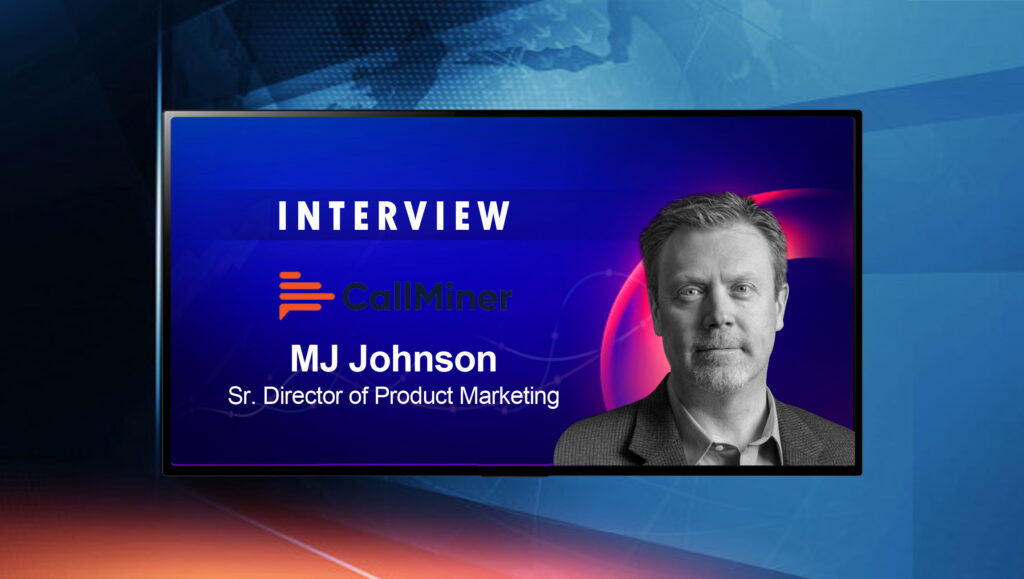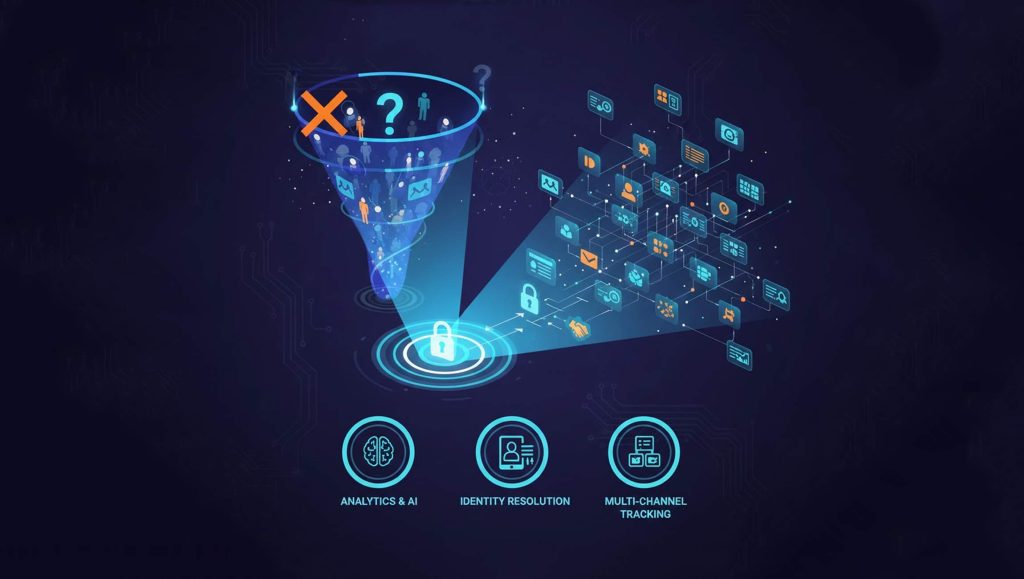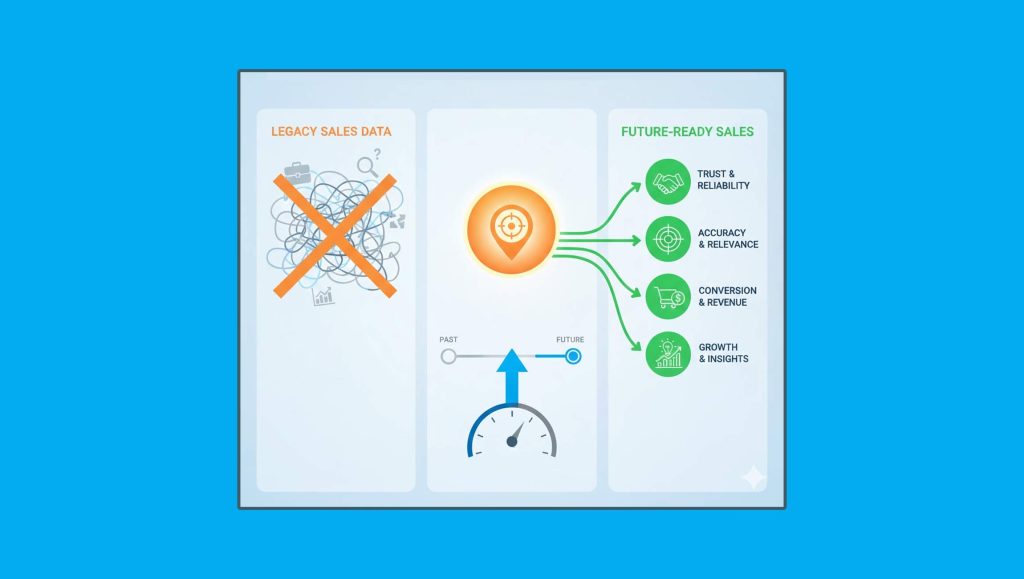MJ Johnson, Senior Director, Product Marketing at CallMiner shares his top B2B sales and marketing tips and best practices in this chat with SalesTechStar:
_______
Welcome to this SalesTechStar chat MJ, we’d love to hear about your journey through the years and your role at CallMiner?
Thanks, it’s great to be here!
I’ve worked in high tech my entire career, about half the time for enterprise software companies in the Bay Area, and the other half for those in and around Boston. It’s been a blast, and I’ve been lucky enough to work with incredible marketers, sales professionals, product visionaries, and leaders along the way.
In that time, I’ve led a number of global product marketing teams within the technology space – particularly those aimed at improving the digital experience. The goal of those teams has always been the same: connect with prospects and customers to understand their needs, communicate the value that they stand to realize through technology innovation, and measure the outcomes they’re able to achieve.
At CallMiner, I’m focused on evangelizing the benefits of conversation analytics – the ability to use machine learning and artificial intelligence to extract insights from unstructured conversations to improve the quality of customer interactions, drive operational efficiency, and help everyone in an organization make more informed decisions.
Specifically, I work with our product management, marketing and sales teams to establish and share our go-to-market message of how CallMiner supports a variety of use cases, like contact center efficiency, customer experience, multi-touch sales and more. We do this across a range of industries, including healthcare and financial services.
Read More: SalesTechStar Interview With Jason Davis, Senior Director Of Sales And Marketing Practice At BTS
With CallMiner’s recent announcement for the multi-touch sales use case, we’d love to know the key benefits end users can expect?
The reality for sales organizations today is that digital interactions are more popular than ever, for reasons like ease of scheduling, reduced expense, improved safety and most importantly – insights into the buying cycle. In fact, according to Gartner, 60% of B2B sales organizations will transition to a data-driven selling approach by 2025.
To help our customers capitalize on these technology trends, CallMiner recently introduced its Sales Conversation Analytics solution – which takes the benefits of conversation analytics, and applies it to multi-touch sales engagements, typically involving multiple teams such as business or sales development representatives and enterprise sales account managers.
To support these sales teams, our solution has been tailored to help capture conversations with prospects and customers, provide key insights that can help improve their ability to progress deals through stages more quickly, deliver visibility to sales managers and executives to improve pipeline forecasting, and close business more rapidly.
Using our conversation analytics, sales leaders can quickly identify and scale best practices across sales reps by coaching around what works, while pursuing less of what doesn’t.
Based on CallMiner’s expertise in uncovering insights and trends from unstructured data, offering this kind of solution was a no-brainer. With analysis of voice and text-based interactions, as well as pre-built integrations for critical communications platforms, including dialers, video conferencing, mobile phones, CRM and more – CallMiner’s Sales Conversation Analytics solution helps enterprise sales teams improve rep effectiveness, sales cycles, and overall ROI.
How are you seeing Revenue Intelligence platforms impact the way sales and revenue teams function and ideate processes today?
Revenue intelligence goes hand-in-hand with conversation intelligence and analytics, uncovering the insights that make it possible to take the next best actions during the sales cycle. It combines the core functions of sales engagement, such as cadence tracking and forecast accuracy, into deal-by-deal and step-by-step analysis. These types of insights help sales teams function more effectively, better meet customer and prospect needs, and ultimately close more deals in less time.
The revenue intelligence space has evolved over the past few years, with a persistent focus on voice and video-capture capabilities. We all know how important calls are to sales. It’s critical that tools can analyze the voice of the customer and voice of the employee (or sales rep) in real time to bring execution to the next level. Of course, real time analysis can help increase script adherence, but many sales teams are looking for much more than that. In the future, I expect we’ll also see revenue intelligence platforms offering content suggestions for the sales rep based on the conversation. For example, when a prospect mentions a particular competitor, the best tools will be able to automatically present relevant battlecards and recent wins while the interaction is still in progress.
When sales leaders and business development reps have the opportunity to improve the outcome of sales conversations while they’re still in progress, that’s where the true ROI is experienced. We’re talking about accelerating time to close. Not only does this impact the deals that are already in the pipeline – it impacts the understanding and scaling of the actions and behaviors that work best. Sales executives and supervisors can then share that knowledge across the base for improved performance.
Read More: SalesTechStar Interview With Mary Pat Donnellon, Chief Revenue Officer At CallRail
As a product marketing leader, what are some of the top challenges you face when aligning core steps and campaigns/processes and ensuring multiple stakeholders and teams are always on the same page?
Well, you just articulated the top challenge – keeping everyone on the same page! The key to breaking down silos and driving alignment can really be summed up with three Cs: communication, consistency and cadence.
Communication takes so many forms in modern businesses, and keeping track of it all is like a full-time job on top of everyone’s full-time job. Information comes from so many channels, both inside and outside the organization. So, of course communication with cross-functional teams is a base-line requirement – but alone, it isn’t sufficient.
Consistency is about setting expectations for what kind of communication is available by channel and by audience. Establishing consistent, foundational messaging deliverables drives alignment with marketing teams, and helps enable sales teams. Consistency also helps drive alignment with product teams, as product marketers work to establish standardized ways of capturing overarching value statements that align to product roadmaps. But if you only do this once or twice, it won’t stick. That’s where cadence comes into play.
Cadence of consistent communication is how you set expectations, and get audiences coming back for more. Delivering a regular message on a regular weekly, monthly or annual basis helps to not only drive alignment within organizations – it also helps keep companies in step with their customers. Which, let’s face it, is really what matters.
A few thoughts on the importance of a good martech-salestech process and tech alignment? Some best practices to share?
There are so many great martech and salestech processes available out there – which honestly is as much of a challenge for organizations as it is a relief. Scott Brinker’s most recent “MarTech 5000” has over 8,000 companies in it and represents a staggering 5,300% growth in martech since 2011. It’s more than a little overwhelming.
For organizations to stand a chance of adopting technology to support their revenue operations, they need to first understand and appreciate the business processes they’re looking to improve through adoption of technology. That means documenting (and adhering) to sales methodologies and marketing funnel promotion that uniquely serve your business. I’m not saying that’s always fun, or even intuitive, but if you’re going to adopt technology for GTM functions, you really need to first align around the processes you’re optimizing.
Some last thoughts before we wrap up for marketing and sales teams in B2B.
An old mentor of mine used to say that sales has two jobs: selling, and not my job. Now, I know many sales professionals who are tremendous assets to their organizations that contribute in many ways that go beyond just closing deals, but the spirit of this sentiment for me is simply this: the easier you make it for your sales teams to sell, the more obstacles you can remove, the more support you can lend them, the more successful your revenue operations will be.
The reality is, sales conversations are ripe with insights that can help remove obstacles to closing deals. But so much of extracting those insights has little to do with actual selling. I’m talking about recording the conversation, creating transcripts, analyzing those transcripts, assessing audio queues, delivering insights and recommendations, collecting those into groups that then point to where focus first – that’s all tremendously useful to sales teams, and it has little to do with what they are actually measured against.
CallMiner built its business on helping extract meaning from the noise. With Sales Conversation Analytics, we’re using that expertise to uncover incredibly valuable insights that live within sales conversations to inform action, improve multi-touch sales engagements to shorten deal cycles, and maximize revenue potential. By analyzing conversations that are already happening, sales executives, supervisors and business development representatives stand to improve what they’re already doing. It’s not aspirational. It’s real, and it’s being unlocked by conversation analytics.
Read More: SalesTechStar Interview with Chris Loretto, Executive Vice President at Adtaxi
 CallMiner provides conversation analytics to drive business performance improvement. Powered by artificial intelligence and machine learning, CallMiner delivers the industry’s most comprehensive platform to analyze omnichannel customer interactions at scale, allowing organizations to interpret sentiment and identify patterns to reveal deep understanding from every conversation.
CallMiner provides conversation analytics to drive business performance improvement. Powered by artificial intelligence and machine learning, CallMiner delivers the industry’s most comprehensive platform to analyze omnichannel customer interactions at scale, allowing organizations to interpret sentiment and identify patterns to reveal deep understanding from every conversation.
MJ Johnson is Senior Director of Product Marketing at CallMiner, with 20 years of experience successfully positioning and bringing-to-market enterprise software solutions and applications including: content delivery and application acceleration, mobile application and front-end optimization, billing and revenue management, collaboration systems, document lifecycle workflow, portal and content management systems.
What’s New on The SalesStar Podcast?
Episode 95: Enterprise Sales Best Practices With Damien Swendsen, VP Sales At InsideView
Episode 94: Getting Smarter About Your Choice Of Martech And SalesTech: With Yoni Tserruya, Co-Founder & CEO At Lusha
Episode 93: How Do You Build An Impactful Customer Success Model: With Daljit Bamford, Tenth Revolution Group






















